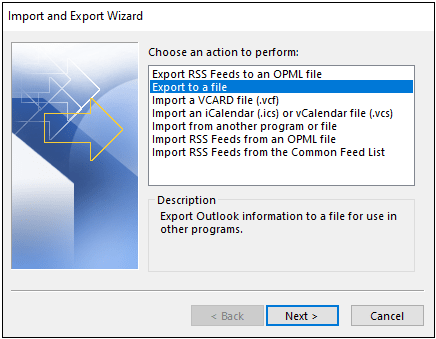OST and PST file format use by Microsoft Outlook for store mailbox data. which serve as storage containers but function differently.PST file save Outlook data on local system and synchronization with various mail server . except Microsoft Exchange Server. OST Outlook user work offline and automatically synchronize change data with Exchange server once internet connection connect .However Some times user need to convert OST to PST without using Outlook -when access mailbox data to another platforms or create backup of OST file.
Method Convert OST to PST Without Using Outlook
Before answer this question ,First understand that there are two type of OST file- Many user not aware about it .Below describe two types OST file.
Orphaned OST Files:
These OST files no longer connect to Exchange Server, because associated Outlook profile deleted or server connection has lost. As a Result user Can not access these file if Outlook is available.
Exchange -connected OST files:
These OST file connect with Exchange server ,allow user to access their mailbox data. Outlook provide feature to convert data from these files .If you want to convert Exchange connect OST file to PST without using Outlook ,no method currently exits
By Understanding different types of OST file .it clear that orphaned OST files not be convert to PST manually – whether Outlook is available or not. Convert Orphaned OST file to PST ,you use third -party OST to PST conversion tool
Is it possible to open OST file with different Outlook profile?
You can not open OST file with another users Outlook profile.OST file link with MAPI profile and Outlook block access if you often with different profile.OST file contain encrypted authentication token generated from Original Outlook profile ‘s unique ID.
Method to Convert OST to PST without Outlook
There is no manual method to convert OST file to PST without Outlook – whether OST file healthy or orphaned .therefore access OST data in PST format or migrate to new Outlook profile then you use third -party OST to PST converter tool
Goldytools Microsoft OST to PST Converter
Goldytools OST to PST Converter is unrestricting tool. enable user to process multiple OST files without any size limitation . Software is equipped with user -oriented features to deliver accurate result and provide efficient conversion experience.
What make Goldytools OST to PST Converter a standout solution?
- Goldytools OST to PST Converter is designed for universal compatibility ,support all Windows operating system from XP to Windows 11and Outlook version from Outlook 2000 to Outlook 2019.
- Create both (ANSI and Unicode) PST file of Custom size : Goldytools OST to PST Converter is a standalone tool you can convert OST to PST without need Outlook installed .During conversion process ,user select PST file format – NASI or Unicode and define specific size for Output PST file.
- Recover Corrupt OST file and Deleted Items:
Orphaned OST file become inaccessible and corrupted .Our Software repair damage OST file and restore delete mailbox items. It provide preview of recovered data, allow user to recover and convert – ensure complete control and accuracy during conversion process - Software include advanced filter option .While converting OST to PST without Outlook ,user choose to include email or folder based date range .This allow you to convert only necessary data and skip unwanted items.
- We understand importance of data integrity -Our software work in read-only mode ,it do not modify or alter original OST file in any way ,it simply read data and maintains original mailbox structure in output PST file file
These key feature make Goldytools OST to PST Converter and complete solution for Convert OST file to PST without Outlook. you use all major functionality using free trial version ,Below step-by-step process to use tool
How to convert OST file to PST without Using Outlook
- Launch free OST to PST Converter on your system
- Click add OST file from ribbon bar
- Browse and add OST file , selecting Advance scanning mode if need
- Select or deselect OST folder/subfolder for conversion
- Choose destination path to save resulting PST file.
- Apply filter option to make conversion process preferer criteria
Conclusion
Reality is that there no manual method to convert OSt file to PST without Outllook .Whether OST file is healthy or corrupted .for conversion Third -party tool is require. Goldytools OST to PST Converter provide a reliable and error – free solution for converting OST file into PST format.


























































































